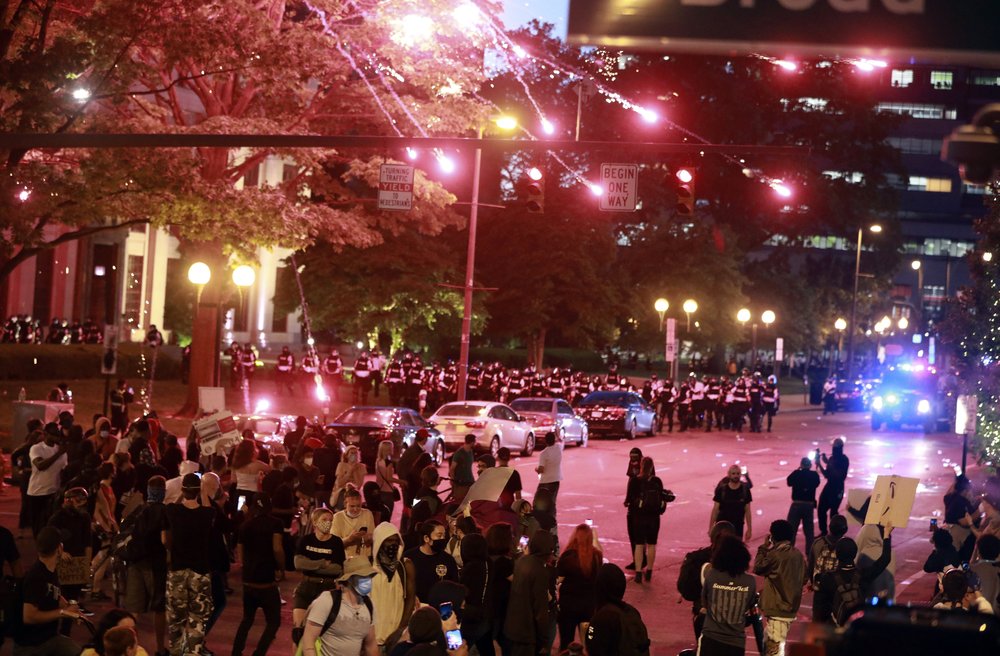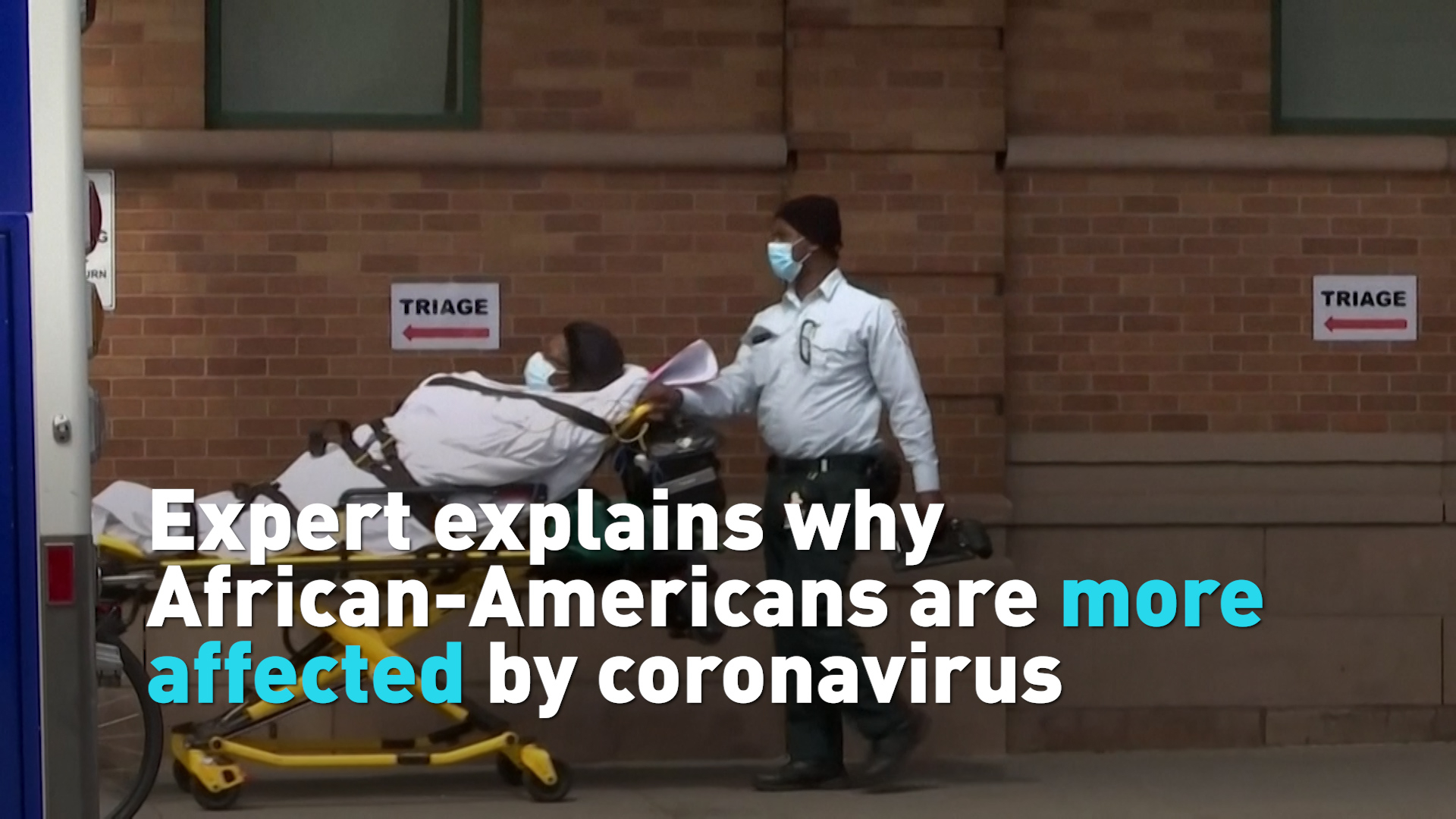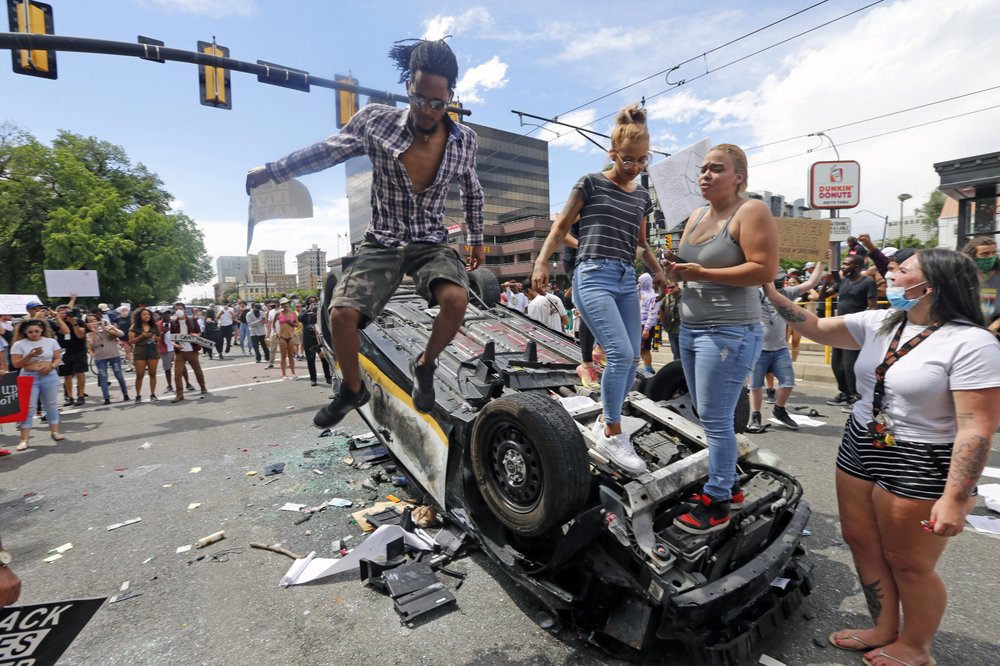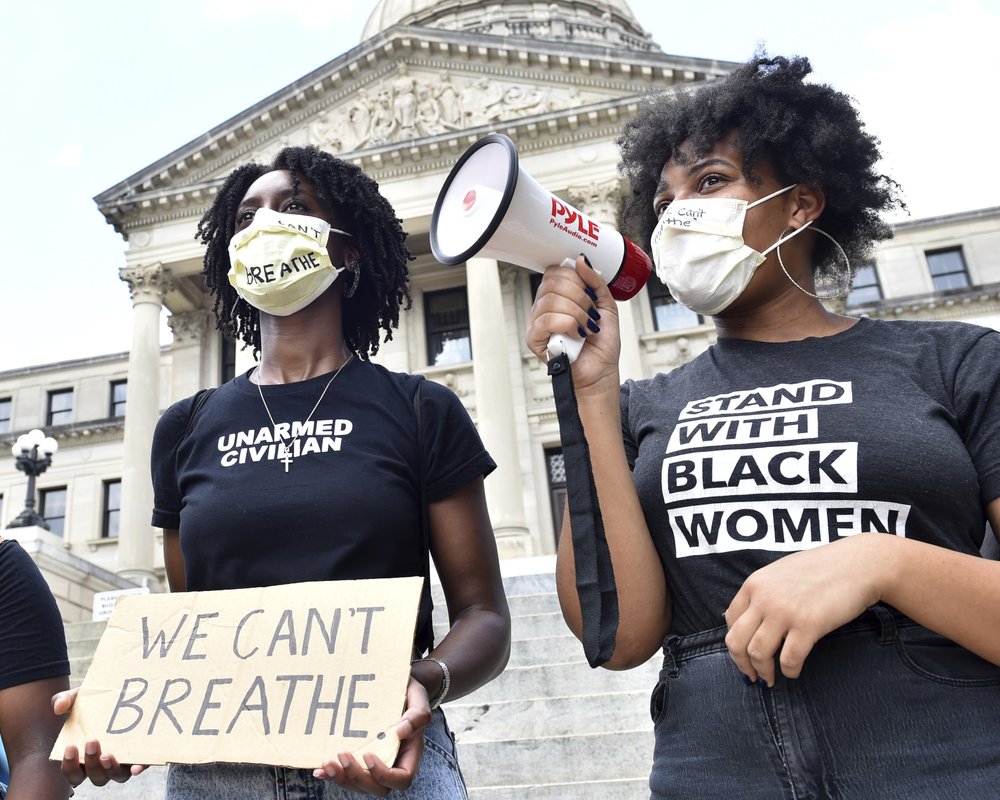
Police set off a crowd-dispersal firework in front of City Hall in Columbus, Ohio as several hundred people gather to protest over the death of George Floyd, May 29, 2020. /AP
Police set off a crowd-dispersal firework in front of City Hall in Columbus, Ohio as several hundred people gather to protest over the death of George Floyd, May 29, 2020. /AP
Outrage continues to grow across the United States over George Floyd's death in police custody, with demonstrators clashing with police, looting stores and setting fires.
In a response to the mounting chaos, U.S. President Donald Trump spoke in Florida: "I stand before you in firm opposition to anyone exploiting this tragedy to loot, rob, attack and menace."
Earlier, the president had threatened the use of force in dealing with protests sparked by the death of Floyd, referring to participants as "thugs" and warning "when the looting starts, the shooting starts."
Floyd, a 46-year-old African-American man, died in Minneapolis on Monday while he was being restrained by the police. Video footage of the incident shows that, handcuffed and in the custody of four white police officers, he was pressed face down on the ground while one officer pushed a knee against his neck for about seven minutes.
As the attention of the country switched from the coronavirus to the death, that African Americans are disproportionately and unfairly targeted by the epidemic seemed to have been forgotten. Nearly one third of those who have died across the country are black, much higher than the national black population of 13 percent. Why? Inherent racism.
The protests happening now are not only a revolt against Floyd's death and racial discrimination more broadly, but also a response to a concentrated outbreak of other social and economic problems in the U.S. caused or exacerbated by the pandemic: High unemployment, declining living standards, and longstanding health and socio-economic disparities.
02:40

According to figures released by the U.S. Centers for Disease Control and Prevention in April, African Americans make up 30 percent of the country's confirmed coronavirus patients, while in some places African-American deaths have been even higher.
As of April 20, 81 percent of coronavirus deaths recorded in the District of Columbia were black people. The district's black population is 46.4 percent. In Illinois, black people constitute 14.6 percent of the total population, but 41.4 percent of those who have died from COVID-19 in the state are black. In Wisconsin, 36 percent of COVID-19 deaths were among black people, who make up just 4.6 percent of the population. In the Wisconsin county of Milwaukee, the most segregated place in the U.S., 26 percent of the population and 81 percent of COVID-19 deaths were black.
Joseph P. Williams, senior editor at U.S. News World Report, told CGTN that a large number of African Americans are living hand-to-mouth, and most of them work in essential low-wage jobs that require them to go into work, which puts them at a much higher risk of catching the virus. He alleged that due to racial discrimination, white doctors usually don't treat black patients as seriously as they treat white patients, which contributes to other health problems that affect black people disproportionately, like diabetes, hypertension and heart disease.
Many experts and activists have acknowledged that racism is a structural problem ingrained in America's public health outcomes.

Protesters climb on a flipped over police vehicle in Salt Lake City to protest the death of George Floyd in Minneapolis, May 30, 2020. /AP
Protesters climb on a flipped over police vehicle in Salt Lake City to protest the death of George Floyd in Minneapolis, May 30, 2020. /AP
CGTN reported in April the notorious "redlining" policy, which contributes to the high risks of catching the coronavirus for black people. Under the practice, the Home Owners' Loan Corporation (HOLC), created in 1930s by then U.S. President Franklin Roosevelt to cope with a housing shortage after the Great Depression, coded predominantly black neighborhoods red and mostly-white communities green.
The segregation policy led to banks denying loans to African Americans because property values of all-white neighborhoods would fall if they had black neighbors. Therefore, black people could rarely own properties in desirable neighborhoods that rose in value, with this legacy passed on to their children.
As a result, a majority of these house owners live in multigenerational homes, which makes social distancing next to impossible. Many other black Americans have to rent condos in crowded and sanitation-poor neighborhoods.
During the pandemic, another blow for African Americans has been unemployment, which often leads to homelessness. The U.S. Bureau of Labor Statistics reported on May 8 that the country shed 20.5 million jobs in April, and the unemployment rate rose to unprecedented 14.7 percent. Among the unemployed, 16.7 percent are African American and 18.9 percent are Latino, both groups which rely heavily on the leisure and hospitality sector, which lost 77 percent of its jobs as travel ground to a near halt.

Protesters chant outside the Mississippi State Capitol building in Jackson, Minneapolis, May 28, 2020. /AP
Protesters chant outside the Mississippi State Capitol building in Jackson, Minneapolis, May 28, 2020. /AP
Before the pandemic, African American workers had the highest unemployment rate nationally at 6.5 percent, followed by Hispanics at 4.5 percent, Asians at 3.2 percent, and whites at 3.1 percent, according to 2018 fourth quarter data from the Economic Policy Institute. The staggering job losses ripple across lines of gender, class and race, but people of color are hit first and hardest.
What does the high COVID-19 death toll of black and Hispanic Americans show?
Opal Foster, an African American and a single mother who has a son with Down's syndrome, was laid off in March by a small printing company in Maryland when the business had nearly come to a halt due to the coronavirus outbreak. Now she is relying on some freelancing to help make ends meet. But she said that's the band-aid on the wound. Foster is among tens of thousands of people of color who worked at small businesses, restaurants, hotels, bars and manufacturing companies.
The pandemic is sending African Americans in a downward spiral. Already choked by unemployment, poverty and inequality, Floyd's death is the straw that broke the camel's back.